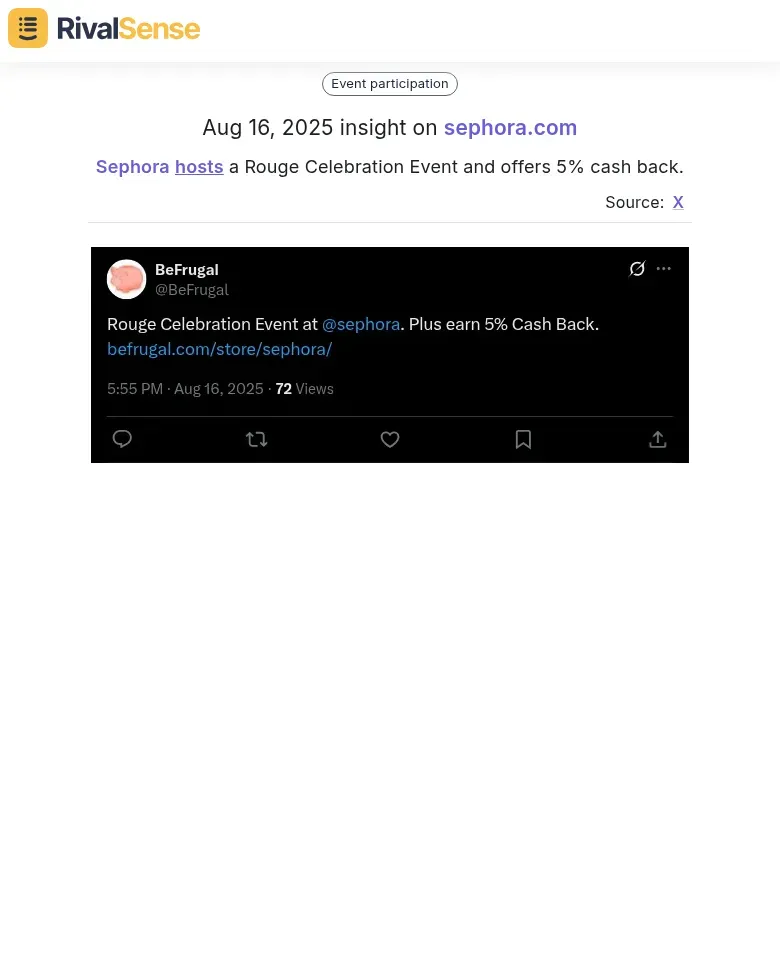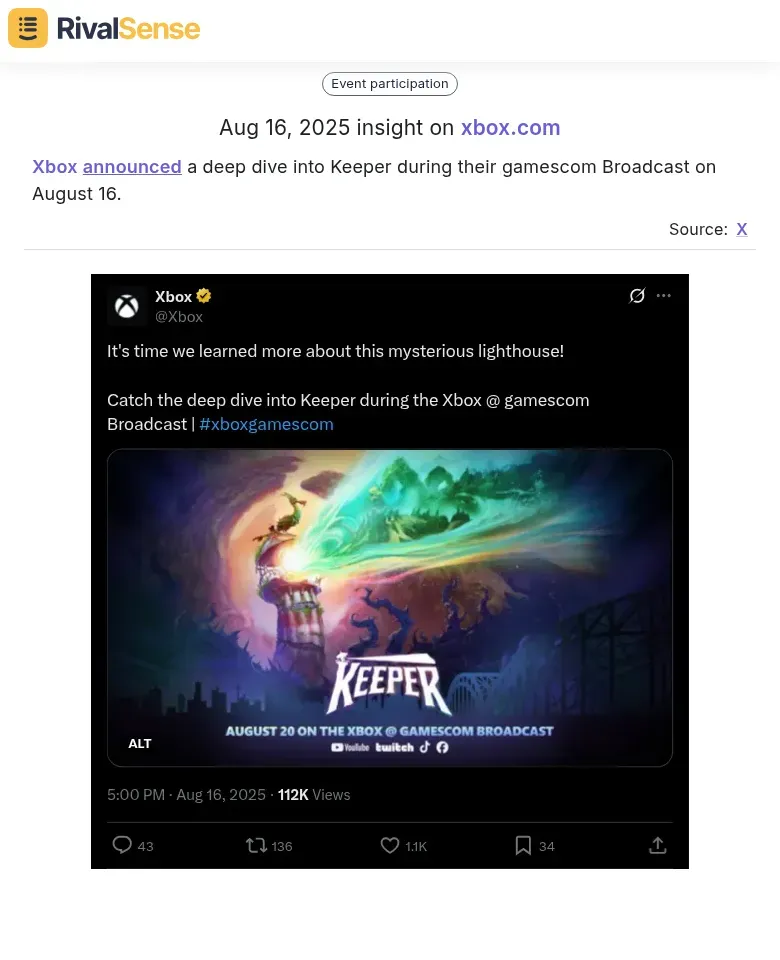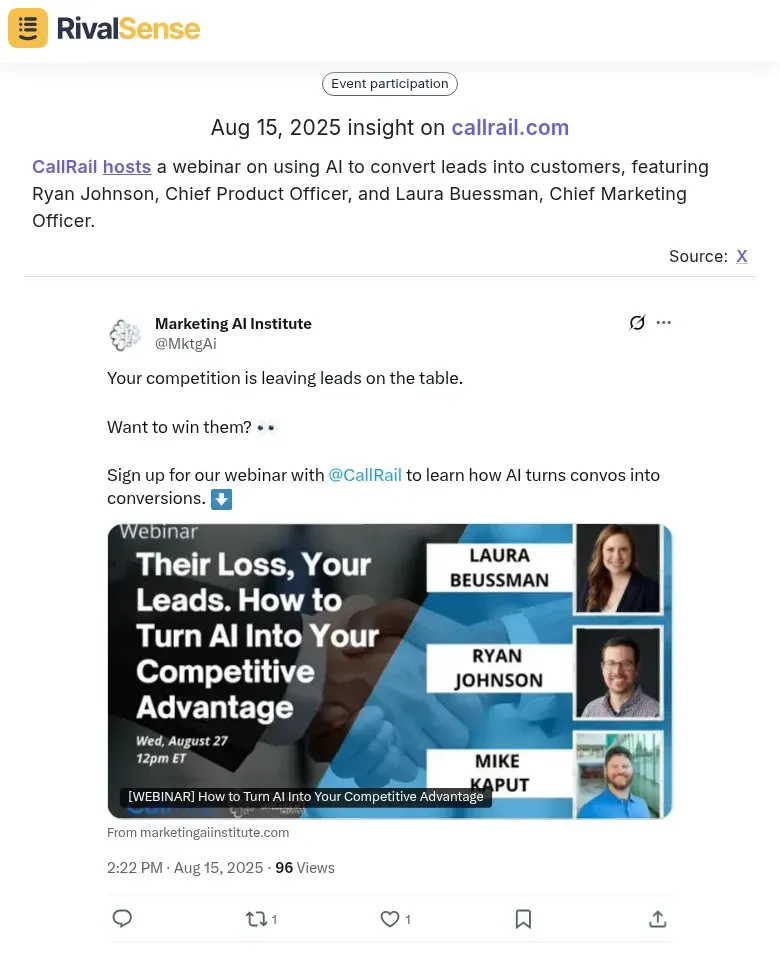How Event Participation Insights Can Track Industry Disruptors
In today's fast-evolving business landscape, tracking competitor events is a strategic necessity rather than just an observational exercise. Event participation insights provide a direct window into competitors' priorities, partnerships, and innovation pipelines, revealing industry trends and potential disruptions early. From exclusive customer gatherings to product deep dives, these engagements showcase where markets are heading before changes become mainstream. Here's why they're indispensable:
- Strategic Intelligence: Competitor events highlight focus areas—like a surge in tech conferences signaling industry-wide digital transformation.
- Trend Forecasting: Patterns in event themes (e.g., sustainability summits) expose rising market priorities.
- Disruption Signals: Unexpected participation (e.g., a retailer at a blockchain expo) hints at strategic pivots.
Key Event Types to Monitor:
| Type | Strategic Value |
|---|---|
| Industry Conferences | Reveal thought leadership & emerging trends |
| Product Launches | Showcase innovation and positioning |
| Webinars/Workshops | Uncover strategic focuses |
| Networking Events | Highlight partnership formations |
✅ Practical Tip: Build a competitor event calendar to detect timing patterns and strategic themes.
Leveraging Exclusive Events for Customer Loyalty
Exclusive events aren't just celebrations—they're engineered loyalty engines that forge emotional connections with high-value customers. Brands like Sephora master this through experiences like their Rouge Celebration Event, offering 5% cash back to deepen engagement. Such insights are gold for understanding how competitors turn buyers into brand advocates.

Why it matters: Tracking loyalty-focused events reveals retention tactics that could poach your top clients. It also exposes how competitors tier rewards to maximize sales impact.
🛠️ Actionable Framework:
- Identify your top 20% customers
- Design hyper-relevant experiences (e.g., industry workshops)
- Offer tiered incentives (e.g., cashback tiers by spend level)
- Benchmark against competitors' emotional engagement tactics
Analyzing Product Announcements and Deep Dives
Product launches and deep dives are strategic chess moves, revealing competitors' innovation priorities and market ambitions. When Xbox announced a deep dive into Keeper during Gamescom, it signaled a commitment to expanding their gaming ecosystem. Decoding these announcements helps anticipate market shifts.

Why it matters: Real-time tracking of product reveals lets you assess competitive threats, adjust your roadmap, and identify feature gaps before customers notice.
🔍 Analysis Checklist:
- Timing: Is it aligned with industry events or fiscal quarters?
- Features: Are they incremental or disruptive?
- Market gaps: Does it solve unaddressed customer pain points?
- Competitor reaction: Who might follow suit?
💡 Pro Tip: Log announcements in a tracker with key features and social sentiment to spot patterns.
Webinars as a Tool for Thought Leadership
Webinars have become premier platforms for establishing authority while secretly telegraphing strategic direction. When CallRail hosted a webinar on AI-driven lead conversion featuring executives Ryan Johnson and Laura Buessman, it showcased their innovation focus while attracting prospects.

Why it matters: Monitoring competitor webinars uncovers emerging tech bets and reveals how they position expertise—helping you counter-position or accelerate your own R&D.
📈 Execution Blueprint:
- Identify trends: Track webinar topics across competitors
- Leverage credibility: Feature internal experts or partners
- Educate, don't sell: Focus on actionable insights
- Repurpose: Turn content into blogs/social snippets
- Analyze gaps: Compare attendee engagement metrics
Integrating Event Insights into Competitive Strategy
Translating event intelligence into action requires systematic tracking and cross-functional alignment. Start by monitoring competitors' event schedules, presentation themes, and attendee feedback through automated tools. Create a simple tracker:
| Metric | Tracking Focus |
|---|---|
| Event Type | Conferences vs. launches vs. webinars |
| Key Messages | Strategic themes emphasized |
| Engagement | Social shares, attendee counts |
| Outcomes | Follow-up content, feature releases |
📊 ROI Measurement:
- Pre-event: Set KPIs (e.g., "Identify 3 competitive threats")
- Post-event: Analyze lead spikes, sentiment shifts, and feature adoption
- Quarterly: Compare event strategies year-over-year for trend spotting
🚀 Critical Move: Dedicate team members to specific competitors for deeper analysis.
Conclusion: Staying Ahead with Event Intelligence
Event intelligence transforms reactive tracking into proactive strategy. By systematically analyzing competitors' engagements—from loyalty events to product deep dives—you gain early warnings of industry shifts and innovation threats. The key is operationalizing insights: build event calendars, assign ownership, and integrate findings into product and marketing planning.
🔁 Sustained Advantage Checklist:
- Automate tracking of key competitors
- Hold monthly "event intelligence" briefings
- Reverse-engineer successful tactics
- Align findings with roadmap decisions
Ready to decode competitors' moves?
👉 Try RivalSense Free to automatically track product launches, pricing changes, and event strategies—delivered in weekly reports. Get your first competitor analysis today!
📚 Read more
👉 Mobilly's EV Payment Expansion: How to Analyze Competitor Moves
👉 Competitor Website Teardown Techniques: A Step-by-Step Guide for B2B Leaders
👉 Boost Corporate Wellness with Competitive Research Methods
👉 How Affinda's Document Shift Empowered Competitors to Adapt
👉 Competitive Edge: Unlocking Rival Insights from Twitter and Beyond
